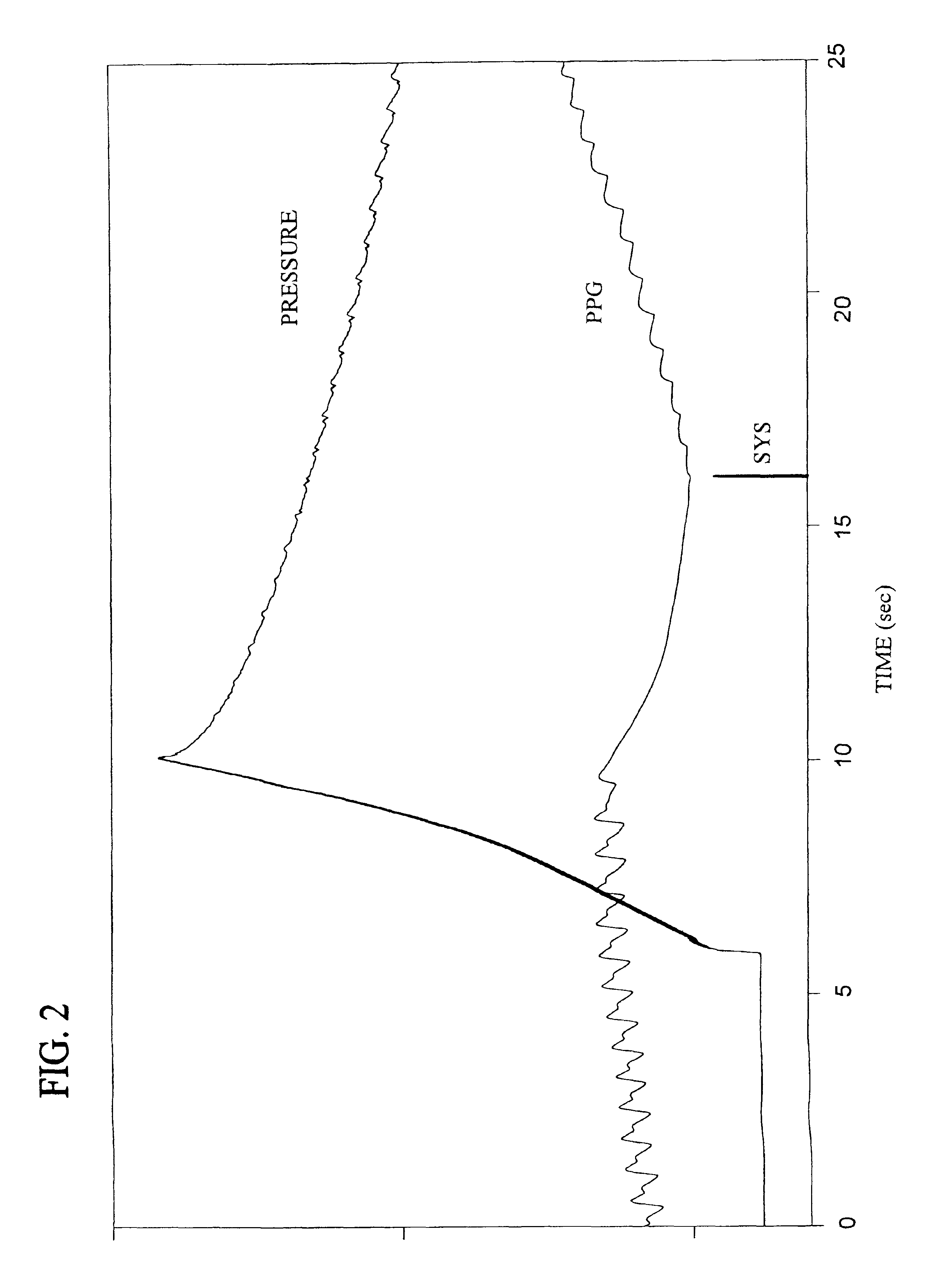Method for systolic blood pressure measurement
a systolic blood pressure and measurement method technology, applied in the field of systolic blood pressure measurement, can solve the problems of reducing the accuracy of the measurement, insufficient hearing acuity of the user, and auscultatory gap
- Summary
- Abstract
- Description
- Claims
- Application Information
AI Technical Summary
Problems solved by technology
Method used
Image
Examples
example 2
According to a second example, the pressure within the pressure cuff is increased at a substantially constant rate chosen to allow the required degree of accumulation of blood within the blood vessels. Preferably, this rate is chosen such that it takes at between 10 and 30 seconds for the cuff pressure to reach 160 mmHg. Most preferably, the rate of cuff pressure increase is chosen to be between about 8 and about 12 mmHg / s.
example 3
Clearly, the examples described thus far have been chosen based upon certain assumptions as to the "normal" ranges within which the DBP and SBP of subjects can, in most cases, be expected to fall. In certain extreme cases, slight adaptations or extensions of the pressure increase sequence might be required.
The third example presents an improvement to this approach in which the rate of increase in applied cuff pressure is changed as a function of a physiological measurement which is itself indicative of the proximity of the applied pressure to the DBP and SBP.
Specifically, with reference to FIGS. 5 and 6, this example is based upon a device and method disclosed in co-pending U.S. patent application Ser. No. 09 / 328,406 filed Jun. 9, 1999, which is hereby incorporated by reference as if fully set out herein. The device (FIG. 5) is generally similar to that of FIG. 1, but adds a second PPG sensor 8 with its associated electronics 9.
The signals from sensors 2 and 8 are indicative of card...
PUM
 Login to View More
Login to View More Abstract
Description
Claims
Application Information
 Login to View More
Login to View More - R&D
- Intellectual Property
- Life Sciences
- Materials
- Tech Scout
- Unparalleled Data Quality
- Higher Quality Content
- 60% Fewer Hallucinations
Browse by: Latest US Patents, China's latest patents, Technical Efficacy Thesaurus, Application Domain, Technology Topic, Popular Technical Reports.
© 2025 PatSnap. All rights reserved.Legal|Privacy policy|Modern Slavery Act Transparency Statement|Sitemap|About US| Contact US: help@patsnap.com



